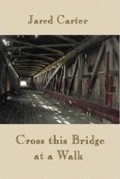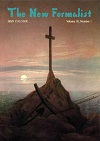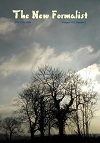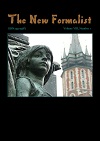The Source
The spring starts somewhere back there in the hills,
I’m told. I’ve never seen it for myself.
But by the time it reaches here it flows
all but the driest weather, wandering through
among the native grasses. Swallows, now,
will sometimes catch a sip in skimming by—
that’s what it looks like. I can never tell.
It could be they are feeding on the wing—
some hatch or other—and simply fly too low.
But anyway, that’s where it gets its name,
Spring Creek Prairie. It never has been plowed.
They burn it off every few years or so.
Last time it got away from them a bit
when the wind came and blew it north and east
and out of their control; a paved road stopped it,
and a dying wind. It is always still,
of course, when they begin a burn, but then,
like the washing of your car before a rain,
no sooner is the struck match tossed than whoof!
it catches and the breeze becomes a wind.
It is all sparks and crackling cinders then,
and soon the fire is racing down the slope
and through the barbed wire at the pasture’s end
into the neighbor field, and sirens now
come screaming round the section roads to try
to head it off, with little they can do,
and now it catches in a row of trees,
then down the last few hundred yards of field
until the flames lean out above the road
and dare a car to pass. The flames are beautiful,
yellow below and bright orange-red above,
crackling and flapping as they move along,
raising a shifting wall of dark black smoke.
Later, the grasses that are filed as seed
will re-emerge out of the blackened earth,
responding like a phoenix to the flames.
It will be as if the fire spoke their names.
Near Mantua
Archeologists in Italy have discovered
a couple buried 5,000 to 6,000 years
ago, hugging each other.
Reuters
So they lay down together here to hold
each other tight against the dark and cold,
their legs and arms crisscrossed like kindling sticks,
their vacant eyes upon each other fixed
where now the spade uncovers them in love.
Thus Marvell’s dictum is at last disproved.
Derby Horse
(A sculpture by Deborah Butterfield)
The way the neck and head lean forward there,
as if a pair of reins displaced the air
to intimate a rider on its back
lightly astride the rusty brown and black,
the dinted metal of its drawn-in sides
like the great hurtling bellows of those rides
that fanned the furnace heart around the turn
and made the gaunt lines stretch and flare and burn
till like a cinder now, a reined-in coal,
having sprinted clear to victory past the pole,
the animal, grown rickety on straight
and stiff, back-bending legs, stands at the gate
into a pasture, or at the stable door,
all racing done, nothing else to run for.
The Sign Said
“Big Sale ¾ Mile”—an arrow loosed
or finger pointed down a country road,
the gravel brimming in the morning light—
and yet I did not turn there.
More than the farm machinery, odds and ends
of household furnishings and other junk
that might await me if I went to see,
I treasured up an image
of when the place had prospered long before,
and fields ran green with winter wheat in spring,
the dust above the combines gathering
the pouring, sheer gold harvest.
Better to give a long look down that road,
imagine turning in beneath tall trees,
finding a place among the other cars—
and keep on driving westward.
World’s Largest Ball of String
A friend had told us of it once, and since
we happened to be in the neighborhood,
we went to see it: western Missouri,
near the river, some ways above KC,
a town with roots that run two centuries deep,
the storefronts with rusting metal thresholds,
brightly painted entranceways and windows.
We walked Main Street, both sides, in twenty minutes.
The storefronts and the sidewalks were decked out
with flowers in windowboxes and in planters,
and many buildings bore plaques on their corners
that told the brazen legends of their pasts.
Antique stores, with their cute or punning names,
maintained their quaintness clear on up the hill.
And having walked one side street to the west,
we turned around and walked back two blocks east.
That’s where we came upon the Irish brewery
that we’d been looking for. We shared a glass
of Irish cream pale ale as we ate lunch
in one of several kerosene-lit halls
the hostess showed us to. As for the string,
it wound and wound in knotted sections till
it loomed up like a great stone from a field,
a kind of hame rigged up around the top
one-third or so, as if the great ball leaned
into the strain of labor as it grew,
a harness worn by Sisyphus, perhaps,
in cheating on his story’s hopelessness.
It sat out on the porch outside the place
on a sort of stoneboat, a meteor
of momentary wonder to tempt in
some Sunday tourist traffic, like ourselves.
Who would contest this local claim on greatness?
Toasting our friend, we finished up our beer.
Luck of the Irish
It was St. Patrick’s Day, and I was late,
hell-bent-for-leather on my speeding bike,
aware that from the side each whirring spoke
helped spin a wheel of fortune in the light,
a blur like bits of ice turned into sleet
revolving in the mild March morning sun,
when to my right I saw the car come on.
Sudden as snow slipped from a roof of slate
it loomed up in my sight’s periphery,
then lightly touched my back wheel as it swerved
and threw me past the handlebars though air
onto the hand that slid me to the curb.
The doctor chuckled at the irony:
a fractured green twig fragment in his care.



